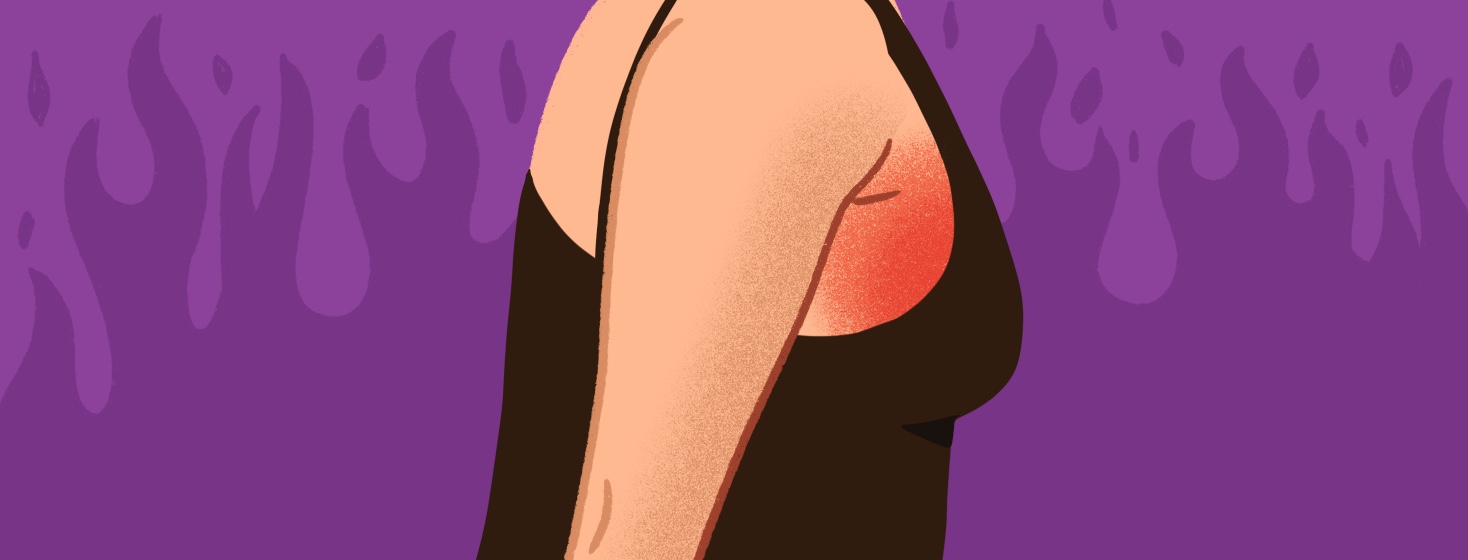How to Manage Radiation Burns
Radiation therapy is a powerful tool that can help fight cancer. More than 70 percent of people with cancer are treated with radiation at some point. Radiation therapy works by using radiation to kill cancer cells.1
However, radiation therapy is an aggressive treatment that can cause unpleasant side effects. One of the most common side effects of radiation therapy is radiation dermatitis, or burns that damage the skin. Almost everyone who receives radiation therapy for breast cancer is likely to have some level of radiation burns.1-3
What do radiation burns look like?
Radiation therapy can change your skin in several ways. Radiation burns may lead to:2,3
- Red skin that looks like a sunburn
- Severely itchy skin
- Dry and peeling skin
- Swelling under the burn
- Wet, sore, and infected skin. This is more likely to happen in skin folds, such as under the breast.
These skin changes do not happen right away. It often takes a few weeks after treatment begins to see the damage. Most of these changes should go away a few weeks after radiation therapy ends.2,3
However, some changes may be permanent. Skin that was burned may remain discolored, blotchy, dry, or thick. It will also be more sensitive to sun damage.2,3
What causes radiation burns?
Radiation therapy does not just kill cancer cells. It also harms and kills healthy cells near the cancer. This affects the skin cells in the treatment area. When you are receiving radiation frequently, those skin cells do not have time to heal and regrow between treatments. The damage to skin cells causes burn symptoms.1,2
How are radiation burns treated?
To manage radiation burns, try to be extra gentle with your skin. There are several ways you can do this:2,3
- Wear soft, loose-fitting clothes. If you can, avoid any tight clothes that rub directly on the skin.
- Wash your skin gently with a mild soap.
- Avoid exposing your skin to very hot or very cold things, such as hot showers or cold packs.
- Avoid exposing your skin to the sun. Do not use tanning beds.
- Take a lukewarm shower once a day, or a short bath every other day.
- Pat your skin dry. Do not rub it.
- Avoid rubbing or scratching the burns, which can worsen them or cause infections.
- Minimize sweating if possible. This might mean avoiding serious exercise or very warm situations.
- Sleep in a room with a humidifier. This may help soothe your skin.
Ask your doctor to recommend soaps and creams for your skin during radiation therapy. It is also a good idea to ask them about your other skin care products. Do not use the following products without asking your doctor about them first:2
- Deodorant
- Hair removal products, such as shaving cream
- Sunscreen
- Bath products
- Oils or lotions
- Makeup or makeup remover
- Perfume
If your radiation burns are severe, reach out to your doctor. You should also have them check your skin each time you receive radiation treatments. If any changes are concerning to them, they may recommend additional steps. This might include medicated lotions, antibiotics, or drugs for pain and itching.2,3

Join the conversation